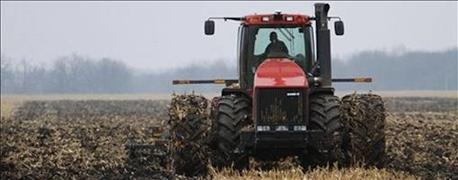May 28, 2016

With the recent rains and the wet soils, many producers may be tempted to head to the field sooner than they should. Wet soils are easily compacted when tilled or driven on as the soil particles are lubricated and "slide" easily under the weight of the implement and/or tires. Sidewall compaction during planting can be a problem in wet soils, especially if the crop is "mudded in" and a dry spell occurs after planting. Patience is required to wait for the soil to dry, but if the next rain is coming or the yield penalty for late planting is growing, it's hard to wait.

BE PATIENT: It's not a good idea to try to till wet soils to dry them out. Tilling or driving on wet soils causes compaction. Patience is needed to wait for the soil to dry, but it can be hard to wait if the next rain is coming or the yield penalty for late planting is growing.
How wet is too wet? If you are putting a log chain or a tow strap in your tractor cab to pull you out when you get stuck, even you know it's too wet. Make a quick check of soil moisture conditions by taking a handful of soil from planting depth (or tillage depth if planning on doing tillage) and press it in your hands to make a mud ball. If wet soil sticks to your hand, it's probably too wet. Drop the mud ball to the ground from waist high. If the mud ball doesn't break apart when it hits the soil surface, it's probably too wet.
Wait for better soil conditions
Even with no-till, waiting a day or two for the soil to dry out some will provide better soil conditions for stand establishment. Mudding the crop in often results in some seed-vee smearing, sidewall compaction, and/or over packing of the seed. The resulting uneven emergence and poorer stands often reduces yields more than the slight reduction in yield from planting later. There is still time to get the crops planted without major yield penalties from late planting, especially for soybeans or grain sorghum.
Depending on how fast the rain came and how little residue was on the soil surface, a crust may have formed and some may want to till the field to break up the crust. This should be avoided as the soil may be too wet to do tillage. The soil will be able to support the weight of a planter well before it is dry enough to be tilled. Producers will be better off to simply plant the crop through the crust. The seedlings will come up through the slot that the planter cut into the soil when placing the seeds. By not tilling the soil and by not running residue movers, there will be more residue on the soil surface to reduce crusting problems, another advantage to no-till.
For additional information, contact Paul Jasa, University of Nebraska Extension engineer at [email protected].
Source: UNL CropWatch
You May Also Like




